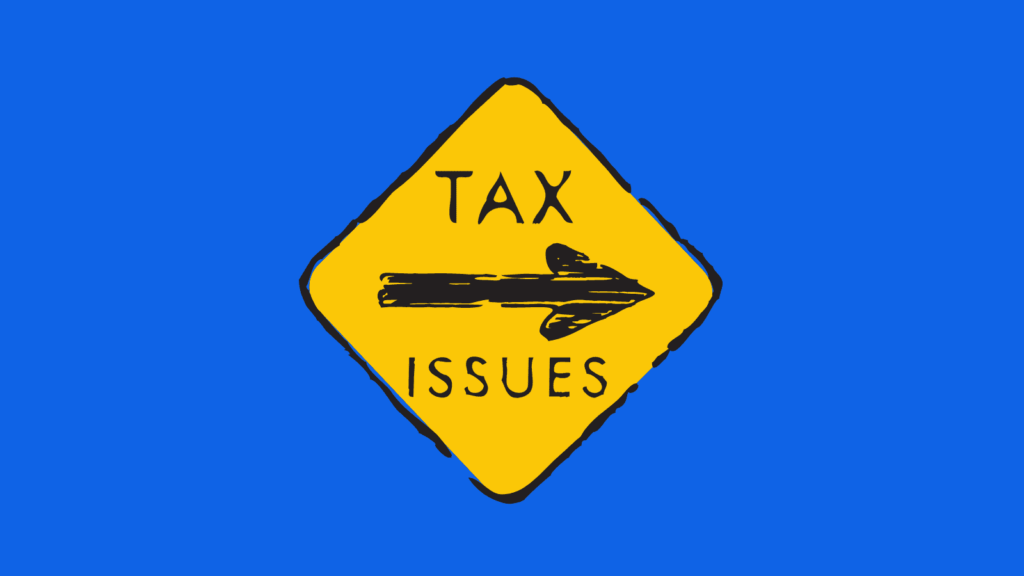8 Common Tax Issues and Their Solution
December 16, 2022

peakreliance
Accounting, Bookkeeping, Taxes
Taxes can be a complicated and confusing topic for many people. While everyone is required to pay taxes, there are a variety of issues that can arise that can make the process even more difficult. Here are 8 common tax issues and solutions to help you navigate through them.
- Filing taxes late
If you miss the deadline to file your taxes, you may be subject to penalties and interest. To avoid this, make sure to file your taxes on time, even if you can’t pay the full amount due. If you need more time to file, you can request an extension using Form 4868. This will give you an additional six months to file your taxes, but it does not extend the deadline to pay any taxes owed. If you can’t pay your taxes in full, you can make partial payments and work out a payment plan with the IRS.
- Incorrect information on your tax return
If you realize that you have made a mistake on your tax return, don’t panic. Simply file an amended return using Form 1040X. Be sure to double-check all of your information and make sure it is accurate before submitting the amended return.
- Not receiving a tax refund
If you’re expecting a tax refund and haven’t received it, there could be a few reasons for this. It could be that your return was lost in the mail, or that it was sent to the wrong address. It could also be that your refund was applied to a past due debt or used to offset any unpaid taxes. To check the status of your refund, you can use the IRS’s “Where’s My Refund” tool online.
- Receiving a notice from the IRS
If you receive a notice from the IRS, don’t ignore it. It’s important to respond to the notice as soon as possible, even if you think it’s a mistake. If you need help understanding the notice, you can contact the IRS or seek the assistance of a tax professional.
- Failing to report all of your income
If you fail to report all of your income on your tax return, you may face penalties and interest. It’s important to report all of your income, even if you don’t receive a W-2 or 1099 form for it. If you receive a notice from the IRS for failing to report all of your income, it’s best to respond to the notice and pay any additional taxes owed as soon as possible to minimize any penalties and interest.
- Not paying estimated taxes
If you are self-employed or have income that is not subject to withholding, you may be required to pay estimated taxes. These taxes are due on a quarterly basis and must be paid on time to avoid penalties. If you’re having trouble paying your estimated taxes, you can contact the IRS to request a payment plan or extension.
By being aware of these common tax issues and knowing how to address them, you can ensure that you are in compliance with tax laws and avoid any unnecessary headaches. If you have any questions or concerns about your taxes, it’s always a good idea to seek the help of a tax professional.
- Forgetting to set aside money for taxes
Not setting aside money to pay taxes can be a serious mistake that can lead to financial difficulties. When you don’t pay your taxes on time, you may be subject to penalties and interest, which can add up quickly and make it even more difficult to pay what you owe.
One way to avoid this issue is to set aside a portion of your income each month specifically for taxes. This way, you’ll have the money you need when it’s time to file your taxes and pay what you owe. You can also consider adjusting your withholding on your paychecks so that more money is taken out each pay period to cover your taxes. This will help to ensure that you have the funds available to pay your taxes when they are due.
If you are self-employed or have income that is not subject to withholding, you may be required to pay estimated taxes on a quarterly basis. It’s important to make sure you set aside enough money to cover these payments to avoid any penalties and interest.
If you are having trouble paying your taxes, it’s important to contact the IRS as soon as possible. The IRS may be able to work with you to set up a payment plan or offer other options to help you pay your taxes. It’s always better to address any issues with taxes early on rather than waiting until it’s too late.
- Keeping poor record
Poor record keeping can lead to a variety of problems, including tax issues. When you don’t keep accurate records of your income and expenses, it can be difficult to prepare your tax return accurately and claim all of the deductions and credits that you are entitled to. This can result in you paying more in taxes than you should, or even facing penalties and interest if you make mistakes on your tax return.
In addition to tax issues, poor record keeping can also make it difficult to track your finances and make informed financial decisions. It can be challenging to keep track of your spending and budget if you don’t have accurate records of your income and expenses.
To avoid these problems, it’s important to keep good records of your financial information. This includes keeping track of all of your income, including salary, investments, and other sources of income. You should also keep track of your expenses, including bills, receipts, and other documents related to your financial activities. By keeping accurate records, you can ensure that you are prepared to file your tax return accurately and claim all of the deductions and credits you are entitled to. You’ll also have the information you need to track your finances and make informed financial decisions.
Are you struggling with tax issues and feeling overwhelmed? Don’t worry, you’re not alone. At Peak Reliance, we understand that tax issues can be complex and stressful, which is why we offer a range of services to help you navigate the process and find the best solution for your specific needs. Check out our pricing and various plans, call us at +1 (718) 218-5558 or email us at [email protected] to get started.
Post Tags :
Common tax issues
About Us
Empowering small businesses and individuals with efficient and reliable bookkeeping & tax services.



















